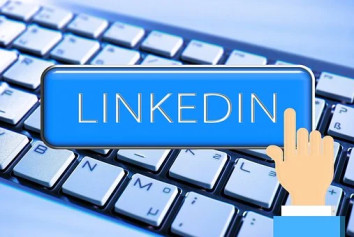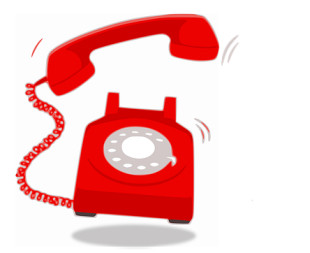Budget-Friendly B2B Digital Marketing Strategies

Amid increasing competition and the high cost of doing business, it’s interesting that marketing budgets are staying as they were or shrinking.
It’s a marketer’s nightmare, but thankfully one they can wake up from. Here are 5 cost-effective digital marketing strategies B2Bs can use to reach and attract potential buyers to their business.
1. Step Up Your LinkedIn Game

The LinkedIn platform is great for both inbound and outbound marketing techniques. A well-built Company Page, lead magnets, and other content may help improve brand awareness and attract audiences to your website and blogs.
You can also leverage LinkedIn’s InMail, to contact potential customers directly or join industry-relevant groups to understand market needs, establish authority, and build relationships.
To maximize your chances of gaining leads, consider the following:
- Turn your profile into a lead magnet. Use professional photos, optimize your headline to include what you do, and a call to action. Offer a freebie (downloadable content, free trial, discount, etc.) and use an incentivizing CTA to get visitors to visit your website.
- Put together a cold outreach messaging strategy. Cold messaging can be a nuisance if you don’t get it right. Start by identifying your ideal customers, create some familiarity (say a mutual connection or interest group), and then craft the right copy to interest them.
- Join relevant groups. You don’t just want to be where your ideal customers are, but you also gain insights into the topics that interest them and the questions that worry them.
- Have a content posting strategy. Create blog posts, articles, and industry updates your target customers will find helpful. Post these regularly to showcase expertise and remain top of mind.
2. Use Referral Marketing

Did you know that up to 65 percent of the new deals a company closes are attributed to referrals?
Recommendations from current or past buyers are extremely useful and help establish trust almost immediately.
A buyer will most probably connect with a referred seller rather than waste time searching and researching credible sellers online or in person.
To build an effective referral program
- Know when to ask. Most companies will ask for a referral as the project they are working on draws to a close or right after. We recommend asking when the client is at their happiest with your work.
- Know your target market. Say you offer insurance services to businesses in the manufacturing industry. Being clear about your target customer allows your client to narrow down and provide better referrals. It’s better than telling them “Anyone in need of insurance coverage”
- Offer customers marketing materials they can share with referees. Share content (one-pagers, whitepapers, etc) that showcases your expertise and sends the right message about you. Customizable referral templates can also help the customer know what to say when recommending your brand.
3. Make Cold Calls

Most of us would describe cold calling as entering unknown realms and using your interpersonal skills to conquer them.
We agree with the interpersonal skills requirement but the unknown realms aspects, not so much. Not with the wealth of information at our disposal.
Lead generation agencies use it successfully to secure sales of meetings for their customers.
To get this done, you may need to
- Familiarize yourself with the key verticals that your target market needs to thrive. It allows you to equip yourself with relevant knowledge, craft thoughtful scripts, and have meaningful conversations that create an insider’s perception.
- Research the prospects. With your verticals on hand, now research your target client to ensure your conversation is based off their individual needs and proves value. Think about what the company does, its market share, and what its product suite looks like.
- Craft an intriguing positioning statement. You have a limited time to catch your listener’s attention and appeal to them. Put together a statement that briefly describes your solution and how it fulfills the specific needs of target customers.
- Objections will come. Familiarize yourself with common objections (we like to think of them as unanswered questions) and assemble solid responses that address the underlying concerns.
- Keep your close in mind. Whether that’s scheduling a meeting/demo or another phone call next week, the point is to keep things moving forward. Look for an opportune moment to weave in your close.
4. Publish Case Studies

This invaluable resource allows you to analyze projects you successfully carried out and present them to potential customers.
The case study will identify problem points, your creative approach to solving the problem, the implementation process, and the ensuing results. It allows you to establish credibility and trust and reassures prospective clients that they are partnering with the right vendor.
Best practices include
- Keeping the basic structure simple. The problem-solution-results-and-customer quotes structure is logical and easy for readers to follow. Summarize your main points at the start. Seeing the outcomes upfront may intrigue readers to learn the details.
- Have a Q&A session with the customer you want to base your case study. Ask the client to share their initial problem, their search for a suitable solution, why they chose you, their expectations, overall experience, and the outcome.
- Interview your internal team. The team that worked with the customer will have details of the process that you don’t. They also add the vendor’s perspective of the project.
- Structure the case study and write it. Break walls of text with visuals to improve appeal. Where the client doesn’t want you to include actual figures work with growth percentages or before/after comparisons to help showcase your impact on their business goal.
5. Repurpose Content

With content repurposing, you taking transforming your existing content to suit the platforms you want to maximize reach on.
You could, for example, take a webinar or industry report and transform its main points into a LinkedIn carousel, infographic, or YouTube clips.
Besides, maximizing reach on different channels, it’s also cost-effective. Your team doesn’t have to start from scratch to build good content. You’ll be increasing your lead generation and revenue-generating activities while keeping operational costs down.
The top guidelines include
- Settle your goals. Are you looking to reach a new audience? Increase awareness or attract leads? Perhaps you want to spend fewer resources on content creation? Knowing what your team is working towards makes it easier to track the results of repurposed content.
- Research the channels you want to use. What format works for each channel? How about the ideal length? What time are your audiences most active? What language works for each? Once you familiarize yourself with each platform, you’ll communicate more effectively with the audience.
- Select the content. You want to start with content that’s already enjoying traction with audiences. If it’s already popular chances are, it will be attractive to the audiences you want to reach now.
- Publish and track. Having ensured your repurposed content meets the platform’s guidelines, publish and track it. The metrics will differ from one platform to the next, so you’ll want to check if these metrics meet your pre-set goals.




